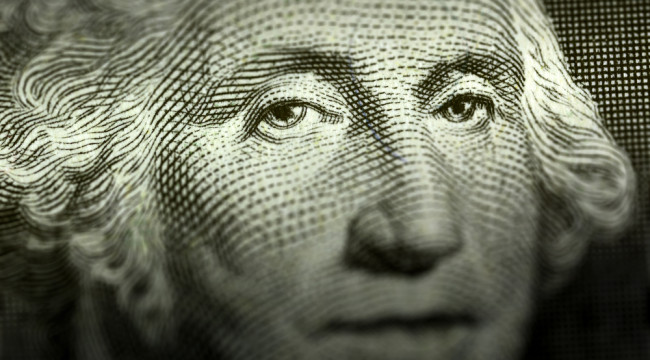Does the Fed Favor Any Group in Particular? Mark Spitznagel vs. Paul Krugman
Kicking off this Economic Farce Royale… we have Mark Spitznagel explaining why the Fed is the root of all evil… or at least the source of the so-call “wealth gap”. We’ve sprinkled our own comments throughout to keep it lively and (God help us) not too serious.
OK. Round one, *ding, ding*…

A major issue is the growing disparity between rich and poor, the 1% versus the 99%. While the president’s solutions differ from Republicans, they both ignore a principal source of this growing disparity.
The source is not runaway entrepreneurial capitalism, which rewards those who best serve the consumer in product and price. (Would we really want it any other way?) There is another force that has turned a natural divide into a chasm… dun, dun, dun… the Federal Reserve. The relentless expansion of credit by the Fed creates artificial disparities based on political privilege and economic power.
[Go figure…]
David Hume, the 18th-century Scottish philosopher, pointed out that when money is inserted into the economy (from a government printing press or, as in Hume’s time, the importation of gold and silver), it is not distributed evenly but “confined to the coffers of a few persons, who immediately seek to employ it to advantage.”
[Well, yeah…]
In the 20th century, the economists of the Austrian school built upon this fact as their central monetary tenet. Ludwig von Mises and his students showed that an increase in money supply is beneficial to those who get it first and is detrimental to those who get it last. Monetary inflation is a process, not a static effect. To think of it only in terms of aggregate price levels (I’m looking at you Ben Bernanke) is to ignore this pernicious process and the imbalance and economic dislocation that it creates.
As Mises protégé Murray Rothbard explained, monetary inflation is akin to counterfeiting, which necessitates that some benefit and others don’t. After all, if everyone counterfeited in proportion to their wealth, there would be no real economic benefit to anyone. Similarly, the expansion of credit is uneven in the economy, which results in wealth redistribution. To borrow a visual from another Mises student, Friedrich von Hayek, the Fed’s money creation does not flow evenly like water into a tank, but rather oozes like honey into a saucer, dolloping one area first and only then very slowly dribbling to the rest.
The Fed doesn’t expand the money supply by uniformly dropping cash from helicopters over the hapless masses. Rather, it directs capital transfers to the largest banks (whether by overpaying them for their financial assets or by lending to them on the cheap), minimizes their borrowing costs, and lowers their reserve requirements. All of these actions result in immediate handouts to the financial elite first, with the hope that they will subsequently unleash this fresh capital onto the unsuspecting markets, raising demand and prices wherever they do.
The Fed, having gone on an unprecedented credit expansion spree, has benefited the recipients who were first in line at the trough: banks (imagine borrowing for free and then buying up assets that you know the Fed is aggressively buying with you) and those favored entities and individuals deemed most creditworthy. Flush with capital, these recipients have proceeded to bid up the prices of assets and resources, while everyone else has watched their purchasing power decline.
At some point, of course, the honey flow stops—but not before much malinvestment. Such malinvestment is precisely what we saw in the historic 1990s equity and subsequent real-estate bubbles (and what we’re likely seeing again today in overheated credit and equity markets), culminating in painful liquidation.
The Fed is transferring immense wealth from the middle class to the most affluent, from the least privileged to the most privileged. This coercive redistribution has been a far more egregious source of disparity than the president’s presumption of tax unfairness (if there is anything unfair about approximately half of a population paying zero income taxes) or deregulation.
Pitting economic classes against each other is a divisive tactic that benefits no one. Yet if there is any upside, it is perhaps a closer examination of the true causes of the problem. Before we start down the path of arguing about the merits of redistributing wealth to benefit the many, why not first stop redistributing it to the most privileged?
Ooh… Them fightin’ words. OK, we turn to *ahem* America’s leading economist, nobel laureate and pointy head, Paul Krugman. He’ll now take himself too seriously and give us his academic rebuttal. We took a few editorial liberties so you wouldn’t fall asleep…
Round two, *ding, ding*…
 I’ll be the first to admit that these past few years have been lean times in many respects — but they’ve been boom years for agonizingly dumb, pound-your-head-on-the-table economic fallacies. The latest fad — illustrated by what Mark Spitznagel just wrote above [ouch] — is that expansionary monetary policy is a giveaway to banks and plutocrats generally.
I’ll be the first to admit that these past few years have been lean times in many respects — but they’ve been boom years for agonizingly dumb, pound-your-head-on-the-table economic fallacies. The latest fad — illustrated by what Mark Spitznagel just wrote above [ouch] — is that expansionary monetary policy is a giveaway to banks and plutocrats generally.
Indeed, his screed actually claims that the whole 1 versus 99 thing should really be about reining in or maybe abolishing the Fed. (Hah… Could you imagine that!) Unfortunately, and I’m sorry for this backhanded compliment, some pretty smart people have bought into at least some version of this dumb story.
What’s wrong with the idea that running the printing presses is a giveaway to plutocrats? Let me count the ways!
First, the situation is utterly the reverse of what Spitznagel claimed. Quantitative easing isn’t being imposed on an unwitting populace by financiers and rentiers; it’s being undertaken, to the extent that it is, over howls of protest from the financial industry. I mean, c’mon! Where are the editorials demanding that the Fed raise its inflation target, right?!
[Crickets…]
Uhh… Beyond that, let’s talk about the economics.
The deliberately misleading… er I mean, naive, version of Fed policy Spitznagel made is that Ben Bernanke is “giving money” to the banks. What it actually does, of course, is buy stuff from the banks, usually short-term government debt but nowadays sometimes other stuff with money that didn’t exist before. But, seriously, it’s not a gift.
To claim that it’s a gift you have to claim that the prices the Fed is paying are artificially high, or equivalently that interest rates are being pushed artificially low. And you do in fact see assertions to that effect all the time. But if you think about it for even a minute, that claim is truly bizarre.
I mean, what is the un-artificial, or if you prefer, “natural” rate of interest? As it turns out, there is actually a standard definition of the natural rate of interest and it’s basically defined on a PPE basis (that’s for proof of the pudding is in the eating). Roughly, the natural rate of interest is something, kind of like the rate that would lead to stable inflation at more or less full employment.
[Uh-huh…]
And we have low inflation with high unemployment, strongly suggesting that the natural rate of interest is below current levels, and that the key problem is the zero lower bound which keeps us from getting there. Under these circumstances, expansionary Fed policy isn’t some kind of giveway to the banks, it’s just a giveaway to the banks that the economy needs.
Furthermore, Fed efforts to do this probably tend on average to hurt, not help, bankers. Yes, I just wrote that with a straight face. Banks are largely in the business of borrowing short and lending long; anything that compresses the spread between short rates and long rates is likely to be bad for their profits. And the things the Fed is trying to do are in fact largely about compressing that spread, either by persuading investors that it will keep short rates at zero for a longer time or by going out and buying long-term assets. These are actions you would expect to make bankers angry, not happy — and that’s what has actually happened.
How, exactly, does expansionary monetary policy hurt the 99 percent? Think of all the people living on fixed incomes, we’re told. But who are these people? I know the picture: retirees living on the interest on their bank account and their fixed pension check — and there are no doubt some people fitting that description. But there aren’t many of them, which makes it ok.
No, the real victims of expansionary monetary policies are the very people who the current mythology says are pushing these policies. And that, I guess, explains why we’re hearing the opposite.
The typical retired American these days relies largely on Social Security — which is indexed against inflation. He or she may get some interest income from bank deposits, but not much: ordinary Americans have fewer financial assets than the elite can easily imagine. And as for pensions: yes, some people have defined-benefit pension plans that aren’t indexed for inflation. But that’s a dwindling minority — which again means it’s perfectly ok — and I assume the effect of, say, 1 or 2 percent higher inflation isn’t going to be enormous even for this minority.
What’s the takeaway? That unless you’re going to go stumping for policy on capitol hill (in which case, there’s no hope for you) you should focus on actionable steps you can take to increase your wealth… instead of engaging in groupthink. As for the policy debate…well, it’s always good for a laugh.
Regards,
The Daily Reckoning
Ed. Note: Whether you’re on a fixed income or not, there are ways you can safeguard and even grow your wealth, regardless of where you stand on the issue debated above. Today’s Daily Reckoning email edition gave readers a chance to get in on a one-time live event that will help them do just that. Didn’t see that offer? Not to worry… The Daily Reckoning will be back tomorrow with another opportunity for you to take advantage of. Be sure you don’t miss that one too. Sign up for the FREE Daily Reckoning email edition, right here.



Comments: